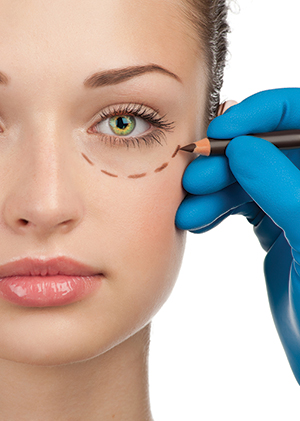Cosmetic Surgery: Reality vs. Myth
Cosmetic surgery is becoming an ever larger part of our culture. From reality television shows to magazine covers and documentaries, the public has never been more aware of the many ways that cosmetic surgery can impact patients from head to toe. Do you know fact vs. fiction on the following misconceptions about cosmetic surgery?
Cosmetic surgery and plastic surgery are one and the same.
- Myth. The terms “plastic surgery” and “cosmetic surgery” are not interchangeable. Confusion about the terms has led to public misconceptions about the two specialties. Cosmetic surgery is the surgery of appearance. It is elective and focuses exclusively on the aesthetics of beauty, while plastic surgery focuses on repairing defects to reconstruct a normal function and appearance, such as cleft lip or palate, burn surgery, hand/microsurgery, maxillo-facial trauma, etc. All plastic surgeons are cosmetic surgeons but not all cosmetic surgeons are plastic surgeons.
Cosmetic surgeons are qualified to conduct cosmetic surgery.
- Fact. Cosmetic surgeons are dedicated to the art of cosmetic surgery. Their strong knowledge base, high level of training, and practical experience make them among the most qualified physicians to perform cosmetic procedures. In fact, Botox®, laser technology, and tumescent liposuction (widely regarded as the best type of liposuction) were developed by ophthalmologists and dermatologists.
 Cosmetic procedures such as Botox®, microdermabrasion, and liposuction are increasingly popular among men.
Cosmetic procedures such as Botox®, microdermabrasion, and liposuction are increasingly popular among men.
- Fact. More and more men are seeking cosmetic surgery. According to the American Academy of Cosmetic Surgery’s Procedural Survey, the top five most popular procedures among men are Botox, hair transplantation/restoration, laser hair removal, microdermabrasion, and liposuction (in that order). The survey also showed that 12% of men plan to have cosmetic surgery at some point in the future.
A majority of men believe that personal appearance affects their ability to succeed professionally or get promoted.
- Fact. According to the recent Consumer Survey conducted by the AACS, 83% of men believe that personal appearance plays a role in their professional success and advancement.
Breast augmentation will fix droopy breasts.
- Myth. Breast augmentation will not lift droopy breasts. This issue is best addressed by having a breast lift.
It’s safe to breast feed if you have breast implants.
- Fact. According to the Mayo Clinic, breastfeeding with implants is safe. While breast milk could absorb some of the silicone from breast implants the amount is not considered harmful to baby. Because breast milk is the best thing to feed a baby, the Institute of Medicine encourages women with breast implants to breastfeed if they’re able to do so.
Breast implants increase your risk of getting breast cancer.
- Myth. The Institute of Medicine found evidence that breast implants do not cause breast cancer or the recurrence of breast cancer. However, it’s still essential to undergo routine screening for breast cancer — breast self-exams, mammograms, and clinical breast exams — just as a woman would if she didn’t have breast implants.
Liposuction is an easy way to lose weight.
- Myth. Your cosmetic surgeon will ask you to lose as much weight as you can first. The results of liposuction will be better if you are as healthy as possible prior to the surgery.
Liposuction removes cellulite.
- Myth. Because tight bands of fibrous tissue cause cellulite, extracting the fat layer that resides just under the skin may actually worsen the dimpled look. Your cosmetic surgeon will be able to discuss expected results from liposuction and whether the procedure is right for you.
Fat comes back after liposuction.
- Myth. Fat does not come back after liposuction. At birth, the body stops producing fat cells, but they do get bigger or smaller depending on your weight. Liposuction reduces the amount of fat cells in targeted areas. Once the fat cells are removed, they’re gone forever.
Botox® can cause droopy eyelids.
- Myth. If your Botox® treatment is administered properly, the risk of suffering from droopy eyelids is lower than 2%. As with any potential side effect, the condition is temporary and should resolve itself within a few weeks.
Botox® will leave you expressionless by freezing your facial muscles.
- Myth. There is a balance between the muscles of the face. If too much Botox® is injected, one can easily lose the action of muscles of expression. However, if this muscular balance is maintained by only injecting small doses into specific muscles, one can have a natural softening of unwanted lines and wrinkles without compromising facial expressions. Patients interested in this procedure should select a physician based on his/her training, education, experience, and demonstrated practice history.









